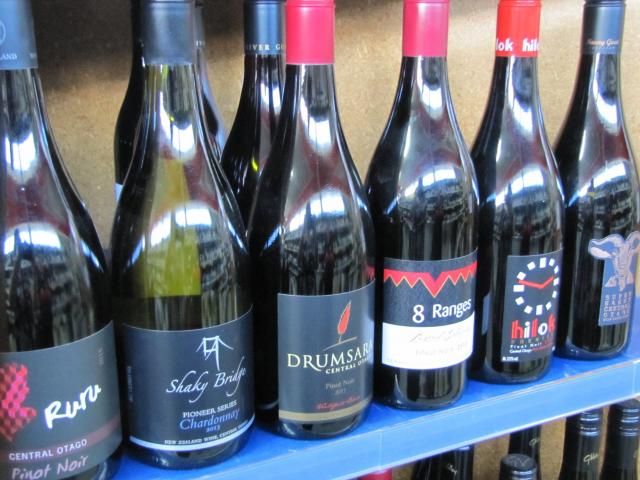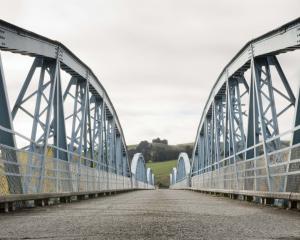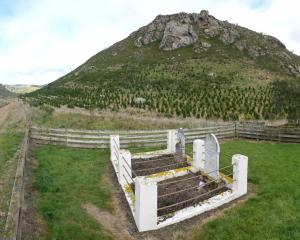
Central Otago produces about 60 times more wine than the Waitaki Valley but impending intellectual property rights registration for Otago’s two wine regions has benefits for both, Hamish MacLean reports.
Waitaki Valley wines often fly under the radar, but New Zealand’s newest wine-producing region could soon have international recognition, along with the country’s high fliers — and neighbouring Central Otago is poised to have the protection it needs after it "catapulted" on to the world stage in just 30 years, industry representatives say.
Both Otago’s wine-producing regions were among the 18 applicants for "geographical indications", or collectively owned intellectual property rights used internationally to promote and protect the reputations of wines’ places of origin. Under the Geographical Indications (Wine and Spirits) Registration Act that came into effect at the end of July, the New Zealand wine industry — on target to become a $2 billion industry by 2020 — would "slot into the international framework", acting New Zealand Winegrowers chief executive Jeffrey Clarke said.
He expected all 18 geographical indications (GI) would be registered after a review by the Intellectual Property Office of New Zealand, which would take up to three months.
"Part of the exercise is that in applying to register as a GI, you’ve got to pull together a whole bunch of information about your region and that’s useful from a marketing perspective; it gives you a body of information that you can use to tell your regional story, which is great," Mr Clarke said.

And while all New Zealand wine regions are dwarfed by Marlborough’s 25,135ha, or 67.7%, of New Zealand’s total producing area of 37,129ha, the New Zealand Winegrowers vineyard register report shows Waitaki Valley’s 41ha, or 0.1%, is in turn dwarfed by its southern neighbour, Central Otago (1896ha, or 5.1%).
Waitaki Valley Wine Growers Association chairman Andrew Ballantyne said despite the appeal for some consumers in the relative obscurity of North Otago wines — with wine drinkers who "get all hip" to the lesser known region — exposure meant "quite a lot in the business".
"We do actually punch above our weight for a small region," he said, but even though "every wine producer in New Zealand" would recognise the region’s distinct identity, the valley was still considered a sub-region by many.
And, the Bobbing Creek viticulturist and co-manager noted, "it hasn’t changed yet".
"The application is in and we’re just crossing our fingers that it will be accepted — and then it will make a big difference, because we’ll be officially recognised as a region."
Central Otago Winegrowers Association general manager Glenys Coughlan said although Central Otago and Waitaki Valley were at "very different stages in their evolution and development as wine regions", the formal protection under the GI Act would protect both regions.
"As the recognition and desirability of a region’s brand grows, the chances of people trying to ‘pass off’ a Central Otago or Waitaki Valley wine will increase.
"Given the international prominence of Central Otago as a wine region, the likelihood of someone misusing the Central Otago name on a wine label is certainly greater than for a Waitaki Valley wine, but as Waitaki Valley wines grow in prominence, the risk of ripping off the name will increase. Having formal protection means that legal action can be pursued."
Central Otago, which produced "well over" 700,000 cases a year (compared with Waitaki Valley’s nearly 12,000 cases), was geographically described as the Queenstown Lakes District Council and Central Otago District Council geographical boundaries, but the GI application described climatology, soil types, wine-making styles, or characteristics that are "essentially attributable to that region".
The character of the wine of the region was a consequence of the geographical, topographical, climatic characteristics, as well as "the human touch — the styles and the philosophies of the regions winemakers", she said.
"Central Otago does have an enviable reputation of being highly co-operative, and I think that’s been part of the secret of success.
"Those people involved in viticulture and wine-making in the region, they’ve all helped to create this shared asset, and now this asset can be protected as we continue to grow the value of it."
Mr Clarke called the 18 applications for official recognition "the initial tranche" and said more regions could apply over time.
At a glance
New Zealand wine regions that have applied for recognition as Geographical Indications. —
Northland, Auckland, Matakana, Kumeu, Waiheke Island, Gisborne, Hawkes Bay, Central Hawkes Bay, Wairarapa, Gladstone, Martinborough, Nelson, Marlborough, Canterbury, North Canterbury, Waipara Valley, Waitaki Valley North Otago and Central Otago.













